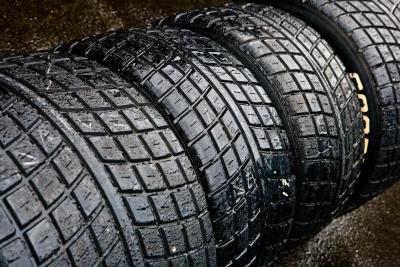
Tire sizes contain three measurements that express different dimensions. The order of the dimensions is always the same, so once the sequence is memorized, decoding a tire size takes no longer than the time to read the information off the sidewall, which is where tire sizes are embossed in the rubber. It's always a good idea to write down the size information when shopping for new tires.
Check the sidewall of a tire to determine its size. This information will be embossed or molded into the rubber sidewall of the tire, so it's easy to find the size even with the tire mounted on a wheel and installed on a vehicle.
Look for three numbers separated by dashes and slashes. For example, one tire size might be P205/75R-15.
Write down "Passenger" for the "P," which means the tire is designed for passenger vehicles such as cars. Instead of "P," sometimes the designation will be "LT" for light truck.
Write down "Section Width" next to the first number in the tire size. For example, 205 means the tire is 205 millimeters wide from the outer sidewall to the opposite inner sidewall. This is a measurement of the tire size needed to fit the width of a specific wheel rim. To convert millimeters to inches, divide the first number by 25.4: 205mm divided by 25.4 equals approximately 8 inches.
Write down "Height" next to the second number in the tire size. For example, the 75 in P205/75R-15 refers to the height of the tire as a percentage of the section width. This means the tire's section height (also known as aspect ratio) is 75 percent of the tire's width (205).
Write down "Radial" next to the "R" in the tire size. The "R" ,means the tire is a radial construction, which applies to tires manufactured for virtually all passenger cars and trucks.
Write down "wheel size" next to the last number. In this example, the 15 in P205/75R-15 means that the tire will fit a wheel 15 inches in diameter.